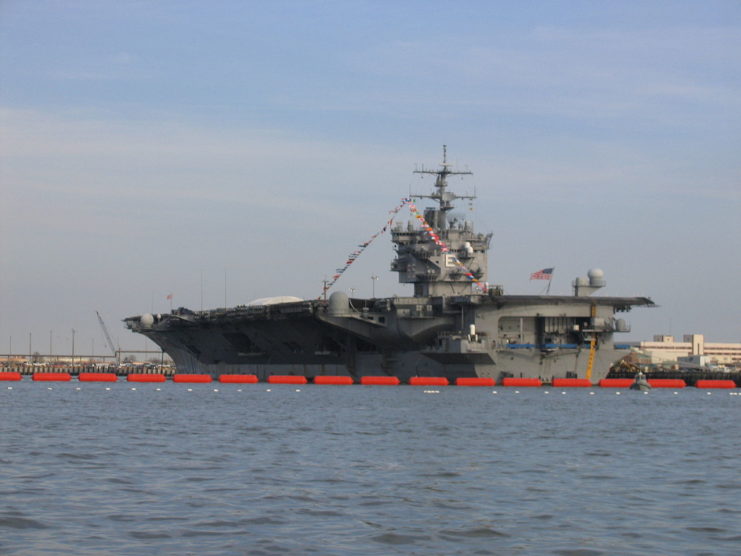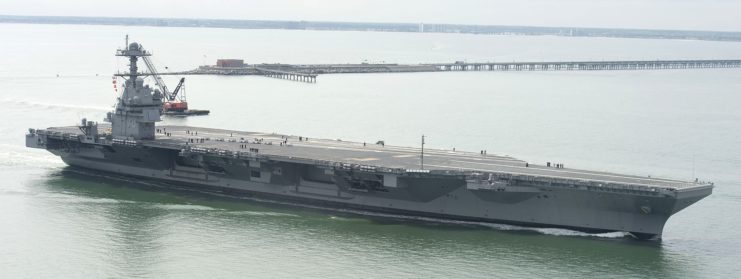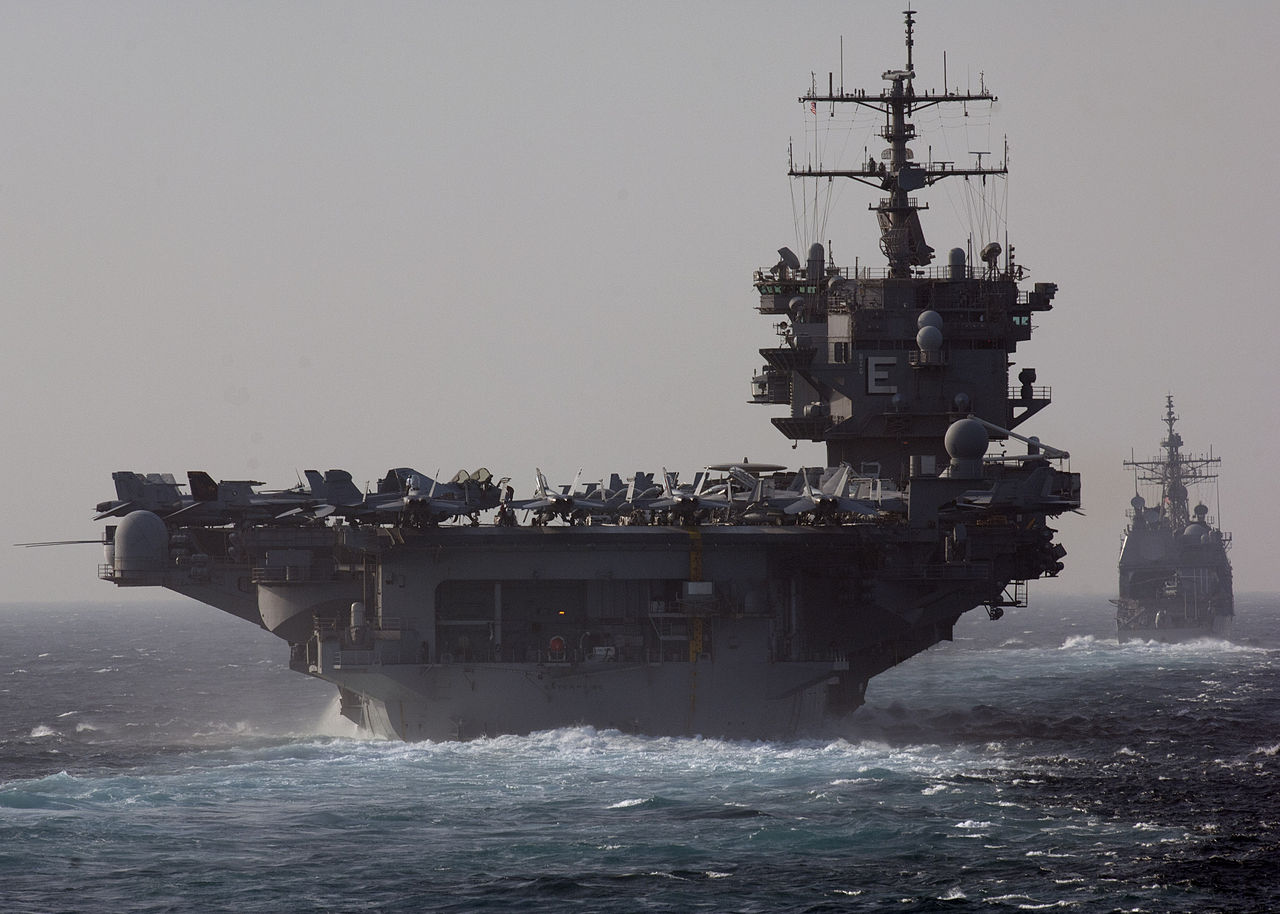The US Navy shipbuilder of choice, Newport News Shipbuilding, is relocating the USS Enterprise from Pier 2 for key quay upgrade works so that it can accommodate the USS Gerald R Ford, the largest warship ever built. The pier was first constructed in 1942 following multiple government contracts in 1941 for seven aircraft carriers and four cruisers.
After the USA was brought into World War 2 following the Pearl Harbor attack an emergency shipbuilding program was implemented. Newport News built 243 ships in response, 186 of which were ‘Liberty Ships’ constructed under the program. The US Navy awarded the shipbuilders an ‘E’ pennant for Excellence to recognise their efforts during the War.
Today the shipyard is part of Huntington Ingalls Industries and is one of the largest employers in the state of Virginia. It has the distinction of being the one and only designer, builder and refueler of US Navy aircraft carriers and one of two submarine builders. It is currently building the carriers USS John F Kennedy and the new USS Enterprise, due to be commissioned in 2028.

The decommissioned Enterprise, nicknamed the Big E, has been at Pier Two since 2017 while options for its future are being considered. There is plenty of space at the site which covers more than two square kilometres, almost 550 acres. The Enterprise will be held in Dry Dock 12 until a final decision on its future is taken.
The options under consideration are basically keep it as a ship, in one piece, but with its reactors and other electronic and motive systems taken out or dismantle the ship. The issues involved in dismantling the ship are centred on the reactors and the potential release of low-level radiation.
Top of the list regarding nuclear reactor decommissioning is Puget Sound, which has recycled 136 reactor compartments from 127 ships and submarines. The resulting units are transported and stored at the government Dept. of Energy site at Hanford, Washington.
The Pier Two Project will be the latest in a series of improvements, the most recent being in 2013. This round of works includes the installation of new forty-ton bollards, needed to secure the largest aircraft carrier ever built. Additional works include fender and timber decking repairs, improvements to stair towers and gangways, and updating the forklift access.
Jim O’Brien, Facilities Director for the shipyard explained that the multi-million-dollar project was essential to ensure that access on and off the ship was simpler and safer. The mechanical and electrical systems are also due an upgrade so that the pier may better serve the USS Gerald R. Ford when it arrives in the summer of 2021 for checks following shock tests.
Shock testing has not been carried out in more than a decade on US Navy aircraft carriers. Warship equipment is exposed to many different types of shock from missile launch systems, aircraft launch and arrest systems as well as combat exposure, such as a direct hit from enemy ordnance.

The Ford will be tested with ordnance detonated close by, with armaments and equipment monitored to ensure the safety and continued combat capability of the ship. It is the most expensive ship built for the US navy at a final valuation at over $13 billion on top of the $4.7 that went on research and development.
Another Article From Us: For Sale: Vintage Truck that Helped French Winemakers Fight the Germans
It is the product of years of work to develop a successor to the Nimitz carrier class and involved more than five thousand shipbuilders and many suppliers and service providers across the USA. To give an idea of its size the paint invoice ran to 757,000 litres, enough to redecorate the White House every year for three and a half centuries.
